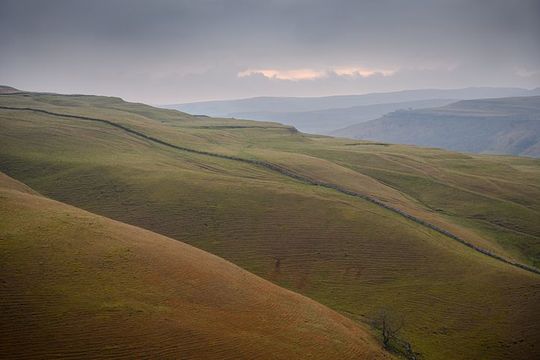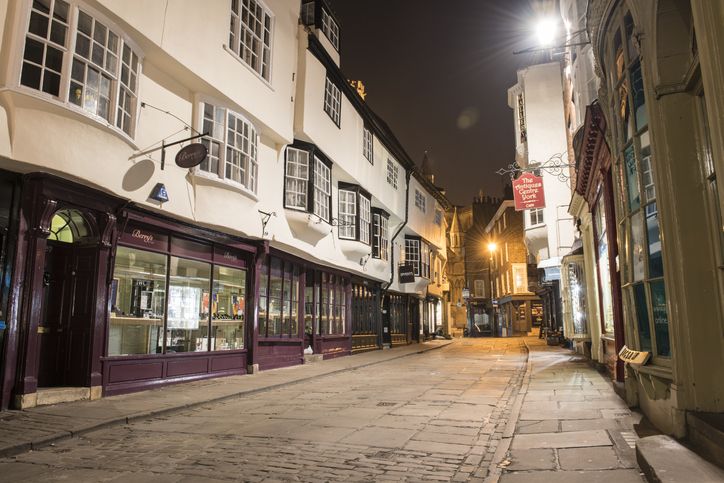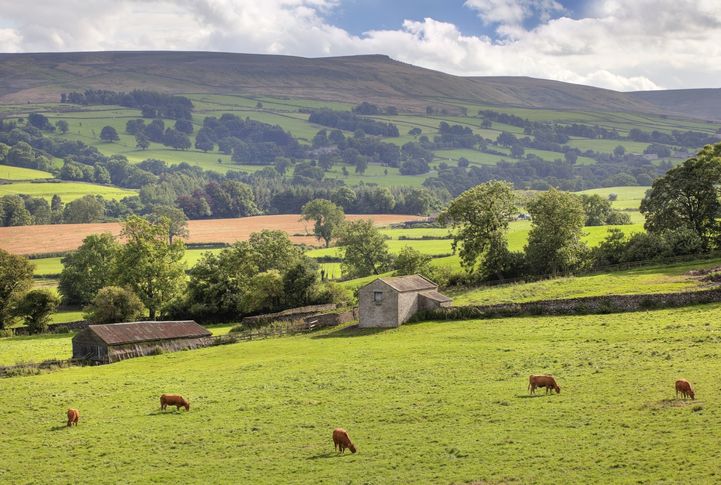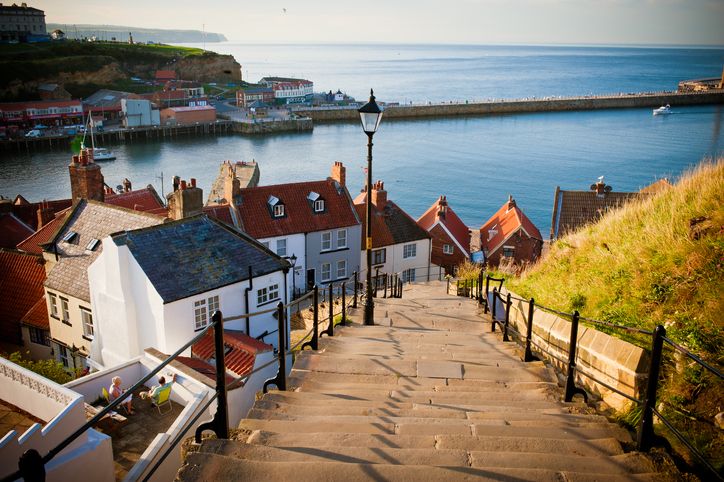
Sunrise over winding mountain road in Yorkshire dales, England.Getty
Our experts compiled a wonderful itinerary taking in this wonderful countryside of farmland and desolate heath that will have any traveller enraptured.
England’s largest county, Yorkshire has dominated the North Country throughout the centuries. In fact, it’s not a county that can be fully explored in a single holiday.
Here is a wonderful circuit ride of North Yorkshire’s justly acclaimed countryside of broad farming valleys and desolate heath.
There is so much to see along the way, adjust your own pace and add a day or two. Any Yorkshire panorama, however, must begin in York.
Day 1. Fast train from King’s Cross
Yorkshire’s county town, York, has been the ecclesiastical and political capital of the North since the time of the Plantagenets.
By car from London, it’s a five-hour drive without dawdling along the way. More efficiently, take the train from King’s Cross to the magnificent, Victorian York Station in the heart of the city in two hours.
York is not a place to arrive in high season or during festivals without having accommodation. Just down Museum Street from the station is York’s exceptional visitors’ center—always the place to pick up local maps and guides, and to find out what’s going on. For accommodation, browse at www.VisitYork.org.
An entire microcosm of English history lies within York’s compact 13th-century walls. It is a very pedestrian-friendly city if you book accommodation within the old walled center. A must-see place to begin is historic York Minster, seat of the Archbishop of York. In its undercroft lie ruins from the city’s origins as the Roman provincial capital of Eboracum. Among the largest Gothic cathedrals in Europe, the Minster is renowned for having the largest expanses of medieval stained glass in the world. While you wouldn’t be able to explore, you might time arrival for 5:15 p.m. for choral evensong—the cathedral choir sending anthems into the clerestory high above the arching nave.
York is replete with great dining options of every variety, and a fabulous collection of pubs and pub fare. You might stroll down cobbled Stonegate, where among the many pubs and restaurants is Ye Olde Starre Inn, thought to be the oldest pub in town.

Stonegate is one of the most attractive streets in York's medieval centre. Lined with traditional shops and houses, it is a popular destination for visitors.
Day 2. Eboracum to Jorvik to York
Today’s a day for choices; you’ll never see it all. Among the city’s most popular attractions is the Jorvik Viking Centre, with a multi-sensory time ride back to Viking York of the 10th century.
Avoid the queue and the crowd by getting there mid-morning. If you’ve seen the Minster, you might head for the Castle Museum, considered one of the finest folk museums in the world — showcasing Yorkshire domestic life and history through the centuries.
Then, there’s the National Railway Museum, a magnet for rail enthusiasts from across the globe, and the Yorkshire Museum, rich with treasures of archaeology and history.
The Treasurer’s House, the Merchant Adventurers Hall, The Shambles and a gaggle of fascinating medieval churches: there is something around every corner. Do take the time, however, to walk a stretch of the 13th-century city walls; the section from Bootham Bar to Monk’s Bar (and the Richard III Museum) is particularly rewarding.
Perhaps this evening plan for a performance at the beautiful Theatre Royal. With claims to be England’s most haunted city, York is also famed for its evening Ghost Walks. They’re splendid entertainment and history, even for terminal skeptics. Ready to stay another day?
Day 3. Into the Yorkshire Dales
Pick up a car this morning, from any of the major rental companies, and head out of town west on the West on A59, perhaps 40 minutes to Harrogate.
The route charted here could actually be driven in a day, without allowing time to actually visit or see anything. Once again, it’s a day to make choices. The spa town of Harrogate is a showcase of Edwardian terraces, gardens, and hotels. Take an old-fashioned Turkish bath, or have morning coffee at famous Betty’s café.
From Harrogate, head north on the A61 toward Ripon. On the way, stop to visit the queen of Yorkshire’s Cistercian monasteries. The ruins of Fountain Abbey’s complex are almost complete, haunting and immaculately manicured.
Adjacent to the abbey, walk or drive the magnificent National Trust landscape gardens of Studley Royal. Nearby Ripon, one of England’s smallest cathedral cities, has a beautiful cathedral near its classic market square. Just a few miles detour, another temptation is Newby Hall, the stately home that Julian Fellows actually used as the Yorkshire model of Downton Abbey and the Grantham family home.
Here, there’s a fork in the road. If it’s midafternoon or you want a slower pace, follow the A61 northeast to the market town of Thirsk for overnight hospitality. To add another day, deep into the Dales, turn northwest on the A6108 toward Leyburn.
Along the way, you might pause in Masham to visit the Theakstone’s brewery, home of the famous Yorkshire bitter Old Peculiar, and the ruins of Jervaulx Abbey (privately owned, and all the more romantic for being somewhat wild).
The small town of Middleham is the center of horse racing in the north, with stables crowding the village, and horses galloping on the Downs. Catch the lay of the land best from the balustrade of Middleham Castle rising above the town.
The fortress has found new fame and attention as the powerbase and home of King Richard III in his years as Lord of the North (see British Heritage, “Richard III at Home,” November 2013). Take an overnight at one of Middleham’s inns on the cobbled marketplace, or continue on to nearby Leyburn for the night.

Rural Middleham, Yorkshire Dales National Park, England.
Day 4. Detour deep into the Dales
Gorgeous, green rolling countryside and farmland have lined the Yorkshire way from Harrogate. To get into the heartlands of the Yorkshire Dales, though, take an excursion through perhaps the most famous, Wensleydale, on the A684. It’s there and back, however.
Hawes is the turn around point unless you are heading over Garsdale to Cumbria and the Lake District. Along the way, there are countless photo ops of the surrounding hills and rugged farmland.
The two highlights of the route, however, are visits to the cascading flights of Aysgarth Falls and Wensleydale Creamery in Hawes—the only home of Wensleydale cheese.
From a return to Leyburn, make for Thirsk via the A1.
Day 5: Over the North Yorkshire Moors
If morning comes elsewhere, route for Thirsk. The quintessential North Yorkshire market town, perhaps Thirsk is best known as the home of James Herriot, pen name of Dr. Alf Wight, who chronicled his life as a Yorkshire country vet in the beloved series All Creatures Great and Small. Fans will certainly want to visit Herriot’s veterinary surgery and home just off the marketplace.
From Thirsk, one rewarding route would be a road trip today across the top of the North Yorkshire Moors. Follow the A19, then the A171 to the Yorkshire coast and the fishing port of Whitby—home of Captain James Cook, Dracula, and ancient Whitby Abbey.
Its pretty harbor lined with shops, inns and pubs, Whitby is a gem—and a fun overnight destination.

Rooftops of Whitby Abbey by sea and steps.
Day 6: Completing the circuit to York
Waking up in Whitby, follow the coastline south past Robin Hood’s Bay as far as Scarborough. Yorkshire’s premier seaside resort is desolate in the off-season and crowded in the summer.
There is plenty of seaside fun and entertainment and a full range of seafront lodgings but be warned that parking is tough and it’s not an easy town to get around. Stay and play or carry on.
From Scarborough, complete the circuit back to York through farming country on the A64. One stop to consider on the way is Eden Camp in Malton.
The intact former German POW camp now lovingly tells the complete story of World War II. It’s an inspiring, informative visit. Or, you could spend much of a day at Castle Howard, the 18th-century stately home made famous by Brideshead Revisited, with sumptuous interiors, a breathtaking walled garden, and sweeping parkland.
The drive into York is easy. You might return the car and catch an evening train to London, or stay the night to catch a morning train—perhaps north to Edinburgh. As we know by now, the choices are endless!
* Originally published in Nov 2015.





Comments